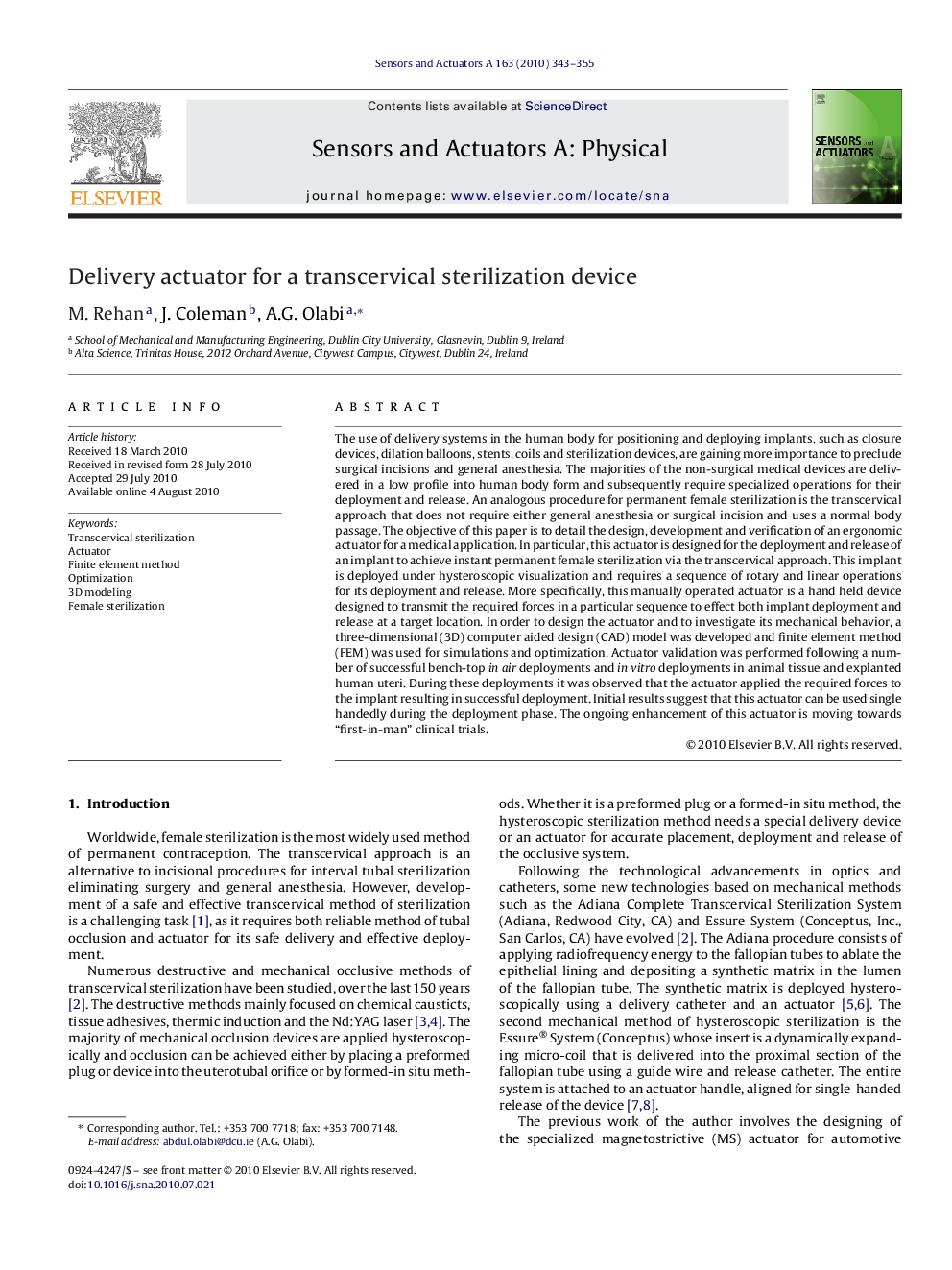| کد مقاله | کد نشریه | سال انتشار | مقاله انگلیسی | نسخه تمام متن |
|---|---|---|---|---|
| 736561 | 893874 | 2010 | 13 صفحه PDF | دانلود رایگان |

The use of delivery systems in the human body for positioning and deploying implants, such as closure devices, dilation balloons, stents, coils and sterilization devices, are gaining more importance to preclude surgical incisions and general anesthesia. The majorities of the non-surgical medical devices are delivered in a low profile into human body form and subsequently require specialized operations for their deployment and release. An analogous procedure for permanent female sterilization is the transcervical approach that does not require either general anesthesia or surgical incision and uses a normal body passage. The objective of this paper is to detail the design, development and verification of an ergonomic actuator for a medical application. In particular, this actuator is designed for the deployment and release of an implant to achieve instant permanent female sterilization via the transcervical approach. This implant is deployed under hysteroscopic visualization and requires a sequence of rotary and linear operations for its deployment and release. More specifically, this manually operated actuator is a hand held device designed to transmit the required forces in a particular sequence to effect both implant deployment and release at a target location. In order to design the actuator and to investigate its mechanical behavior, a three-dimensional (3D) computer aided design (CAD) model was developed and finite element method (FEM) was used for simulations and optimization. Actuator validation was performed following a number of successful bench-top in air deployments and in vitro deployments in animal tissue and explanted human uteri. During these deployments it was observed that the actuator applied the required forces to the implant resulting in successful deployment. Initial results suggest that this actuator can be used single handedly during the deployment phase. The ongoing enhancement of this actuator is moving towards “first-in-man” clinical trials.
Journal: Sensors and Actuators A: Physical - Volume 163, Issue 1, September 2010, Pages 343–355